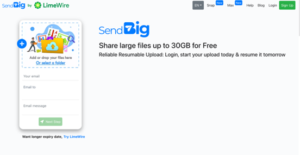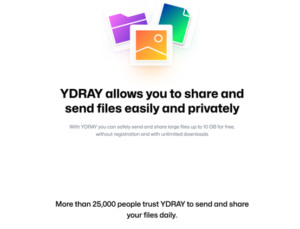Media
Unleashing the Power of zVideo: A Comprehensive Guide

In today’s digital landscape, video content reigns supreme. From social media platforms to corporate presentations, videos have become a staple in communication strategies across industries. However, amidst the plethora of video formats and platforms, one often overlooked gem is zVideo. In this comprehensive guide, we delve into unlocking the full potential of zVideo, exploring its features, applications, and strategies for maximizing its impact.
Unlocking the Potential of zVideo: A Comprehensive Guide
In the realm of digital content creation, video has established itself as the undisputed king. Its ability to convey messages, evoke emotions, and engage audiences has made it an integral part of marketing, education, entertainment, and beyond. Amidst the diverse array of video formats and platforms, one particularly intriguing option is zVideo. In this comprehensive guide, we delve into the world of zVideo, exploring its features, applications, and strategies for unlocking its full potential.
Understanding zVideo
Before diving into the intricacies of zVideo, it’s essential to grasp what it entails. zVideo, short for “zero-Gravity Video,” is a cutting-edge video format that leverages innovative technology to provide viewers with immersive and interactive experiences. Unlike traditional videos, zVideo allows users to explore content from multiple perspectives, interact with elements within the video, and even influence the storyline or outcome in some cases.
Key features of zVideo include:
- 360-degree viewing capability, enabling viewers to pan and tilt their perspective.
- Interactive hotspots that users can click or touch to reveal additional information or trigger actions.
- Branching narratives, where viewers can make choices that affect the direction of the story.
- Integration with virtual reality (VR) and augmented reality (AR) technologies for an even more immersive experience.
Creating Compelling zVideos
Crafting compelling zVideos requires a combination of creative storytelling, technical expertise, and an understanding of audience preferences. Here are some essential tips for creating engaging zVideos:
Craft Engaging Content: Start with a captivating storyline or concept that resonates with your target audience. Whether it’s a brand narrative, educational tutorial, or interactive game, ensure that the content is relevant, entertaining, and provides value to viewers.
Optimize for Different Platforms: Consider the platforms where your zVideo will be published and tailor the content accordingly. Optimize resolution, aspect ratio, and interactive features to ensure compatibility and optimal viewing experience across devices and platforms.
Incorporate Interactive Elements: Take full advantage of zVideo’s interactive capabilities by incorporating clickable hotspots, interactive quizzes, or branching narratives. Encourage viewers to actively engage with the content and explore different pathways within the video.
Best Practices for Storytelling: Effective storytelling is at the heart of every successful video campaign. Use compelling visuals, emotive music, and concise narration to captivate viewers’ attention and convey your message effectively. Keep the narrative concise and engaging, and consider the pacing and flow of the story to maintain audience interest throughout.
Leveraging zVideo for Marketing
In today’s digital marketing landscape, zVideo offers unique opportunities to captivate audiences, drive engagement, and achieve marketing objectives. Here’s how businesses can leverage zVideo in their marketing strategies:
zVideo in Social Media Campaigns: Social media platforms provide a fertile ground for sharing zVideos and reaching a wide audience. Create immersive and shareable zVideos that resonate with your target demographic and align with your brand identity. Encourage social sharing and user-generated content to amplify your reach and foster community engagement.
Integrating zVideo into Email Marketing: Enhance your email marketing campaigns by incorporating zVideos into newsletters, promotional emails, or product announcements. Use personalized video content to grab recipients’ attention and increase click-through rates. Track engagement metrics to measure the effectiveness of your zVideo email campaigns and refine your approach accordingly.
Harnessing the Power of zVideo SEO: Optimize your zVideos for search engines to improve discoverability and drive organic traffic. Use descriptive titles, keywords, and tags to optimize video metadata and improve search engine rankings. Consider creating dedicated landing pages or microsites for your zVideo content to enhance visibility and encourage engagement.
Measuring the Effectiveness of zVideo Marketing Efforts: Utilize analytics tools to track key performance metrics and measure the impact of your zVideo marketing efforts. Monitor metrics such as views, engagement, click-through rates, and conversions to gauge the effectiveness of your campaigns. Use these insights to refine your content strategy, optimize performance, and drive better results.
zVideo for Training and Education
Beyond marketing, zVideo also holds immense potential for training, education, and e-learning initiatives. Here’s how organizations can harness the power of zVideo for training and educational purposes:
Enhancing E-learning Experiences with zVideo: Create immersive and interactive e-learning modules using zVideo technology. Incorporate branching scenarios, quizzes, and simulations to engage learners and reinforce key concepts. Provide learners with the flexibility to explore content at their own pace and customize their learning experience.
Interactive Training Modules with zVideo: Develop interactive training modules that allow employees to practice skills, solve problems, and receive feedback in a simulated environment. Use zVideo to create realistic scenarios that mimic real-world situations and encourage active participation and hands-on learning.
Case Studies of Successful Educational zVideo Implementations: Explore case studies and examples of organizations that have successfully implemented zVideo in their training and education initiatives. Learn from their experiences, best practices, and lessons learned to inform your own zVideo projects and maximize effectiveness.
Advanced zVideo Techniques
For those looking to push the boundaries of zVideo technology, there are several advanced techniques and applications to explore:
360-Degree zVideos: Create immersive 360-degree zVideos that allow viewers to explore content from every angle. Use specialized cameras or software to capture panoramic footage and enable interactive viewing experiences.
Virtual Reality (VR) and Augmented Reality (AR) Integration: Combine zVideo with VR and AR technologies to create fully immersive experiences. Transport viewers to virtual environments, overlay digital information onto the physical world, and enable interactive interactions with virtual objects.
Live Streaming with zVideo: Take advantage of live streaming capabilities to broadcast real-time events, performances, or interactive experiences in zVideo format. Engage audiences in live Q&A sessions, interactive polls, or virtual meet-and-greets to foster real-time engagement and participation.
Personalization and Dynamic Content in zVideos: Tailor zVideo content to individual viewers’ preferences, behaviors, and demographics using personalization techniques. Deliver dynamic content that adapts in real-time based on viewer interactions, enabling personalized storytelling experiences and increasing engagement and relevance.
Overcoming Challenges and Pitfalls
While zVideo offers exciting opportunities, it also presents unique challenges and considerations that content creators and businesses must address:
Technical Considerations and Limitations: zVideo production requires specialized equipment, software, and expertise. Consider the technical requirements and limitations of zVideo technology, such as file size, bandwidth requirements, and compatibility with different devices and platforms.
Addressing Accessibility Concerns: Ensure that zVideo content is accessible to all users, including those with disabilities. Provide alternative formats, such as transcripts or audio descriptions, for users who may have difficulty accessing or interacting with the video content.
Ensuring zVideo Security and Privacy: Protect sensitive information and ensure user privacy when creating and sharing zVideo content. Implement secure encryption protocols, access controls, and data protection measures to safeguard against unauthorized access or misuse of video content and user data.
Strategies for Troubleshooting Common Issues: Develop strategies and protocols for troubleshooting common issues that may arise during zVideo production, distribution, or playback. Proactively address technical glitches, compatibility issues, or user feedback to maintain a seamless viewing experience and minimize disruptions.
The Future of zVideo
As technology continues to evolve at a rapid pace, the future of zVideo holds immense promise and potential. Here are some emerging trends and innovations shaping the future landscape of zVideo:
Advancements in Immersive Technologies: The integration of zVideo with emerging immersive technologies such as virtual reality (VR), augmented reality (AR), and mixed reality (MR) is poised to revolutionize the way we consume and interact with video content. From immersive storytelling experiences to virtual product demonstrations, the possibilities are virtually endless.
Interactive AI-driven Experiences: Artificial intelligence (AI) and machine learning (ML) algorithms are increasingly being used to create personalized and interactive zVideo experiences. AI-driven content recommendations, real-time chatbots, and virtual assistants will enable more dynamic and engaging interactions between viewers and video content.
User-generated zVideo Content: With the proliferation of smartphones equipped with high-quality cameras and editing tools, user-generated zVideo content is on the rise. Platforms that empower users to create, share, and collaborate on zVideo projects will democratize content creation and foster a more participatory media landscape.
Blockchain-powered Content Distribution: Blockchain technology has the potential to disrupt traditional content distribution models by enabling transparent and secure transactions, rights management, and monetization of zVideo content. Decentralized platforms and smart contracts will empower creators to retain greater control over their intellectual property and earn fair compensation for their work.
Enhanced Interactivity and Personalization: Future zVideo platforms will offer even more sophisticated interactive features and personalized experiences. From adaptive storytelling that tailors content based on viewer preferences to real-time gamification and social engagement features, the next generation of zVideo will blur the lines between entertainment, education, and interactive media.
Opportunities for Businesses and Content Creators
For businesses and content creators, embracing zVideo presents a multitude of opportunities to innovate, engage audiences, and drive growth. Here are some key opportunities to consider:
Brand Storytelling and Customer Engagement: zVideo offers a powerful platform for brands to tell their stories, showcase products, and connect with customers on a deeper level. By creating immersive and interactive zVideo experiences, brands can foster stronger emotional connections, drive brand loyalty, and differentiate themselves in a crowded marketplace.
Training and Professional Development: Organizations can leverage zVideo to deliver immersive and engaging training programs, onboarding experiences, and professional development initiatives. From interactive simulations and virtual classrooms to personalized learning paths and real-time feedback mechanisms, zVideo has the potential to transform the way we approach workplace learning and development.
E-commerce and Virtual Shopping Experiences: With the rise of e-commerce and online shopping, zVideo offers new opportunities to enhance the digital shopping experience. Interactive product demonstrations, virtual try-on experiences, and immersive shopping environments will enable consumers to make more informed purchasing decisions and bridge the gap between online and offline shopping experiences.
Entertainment and Media Production: In the entertainment industry, zVideo opens up exciting new possibilities for immersive storytelling, interactive gaming, and experiential marketing campaigns. From interactive movie trailers and virtual concerts to interactive documentaries and immersive theater experiences, zVideo is reshaping the way we consume and interact with entertainment media.
Conclusion
As we journey into the future of digital content creation, zVideo stands at the forefront of innovation and creativity. With its immersive experiences, interactive features, and boundless potential, zVideo has the power to transform how we communicate, learn, entertain, and engage with the world around us. By embracing zVideo and unlocking its full potential, businesses, content creators, and consumers alike can embark on a thrilling journey of exploration, discovery, and imagination. The future of zVideo is limited only by our imagination, and the possibilities are truly limitless.

Media
YT to MP3 Converter Discover 5 Fast and Easy Solutions

Ever been on a long drive, craving that perfect playlist from YouTube, but your data’s running low? That’s when a yt to mp3 converter comes in handy. These tools let you pull audio from videos and save it as an MP3 file for offline listening. I’ve been there—stuck in traffic, wishing I had my favorite podcast ready without streaming. In this post, we’ll chat about the best ones for 2025, how to use them safely, and what to watch out for. Let’s make sure you get the tunes without the hassle.
Key Takeaways
- Pick ad-free yt to mp3 converters like CnvMP3 or EzConv to skip pop-ups and malware risks.
- Go for tools supporting up to 320kbps for clear sound, but remember, quality depends on the original video.
- Always check legality—use for personal, non-copyrighted stuff to stay on the safe side.
- Desktop apps like 4K YouTube to MP3 offer batch downloads, beating online sites for big playlists.
- Mobile users: Apps or browser extensions work great, but avoid shady sites to protect your phone.
What Is a YT to MP3 Converter?
Picture this: You’re watching a music video on YouTube, but you just want the song for your workout. A yt to mp3 converter strips the audio and turns it into an MP3 file you can play anywhere. It’s like having a personal DJ pulling tracks offline.
These tools come as websites, apps, or software. Online ones are quick—no install needed—but desktop versions handle more at once. From my experience, they’re super useful for podcasts or lectures too. Just paste the video link, hit convert, and download.
But not all are equal. Some cap video length at 90 minutes, while others go longer. And quality? Up to 320kbps is common, but it won’t beat studio originals since YouTube compresses audio.
Why Use a YT to MP3 Converter?
Think about saving data on commutes or flights. Streaming eats up to 500MB per hour for video, but MP3s sip way less. I once downloaded a whole album’s worth of tracks for a road trip—saved my phone battery big time.
They’re great for building custom playlists without ads. No more skipping YouTube interruptions. Plus, for creators, grabbing audio clips for edits is a breeze. Users love them for offline access, with millions of conversions happening daily.
Compared to streaming apps like Spotify, these give free access to YouTube’s vast library. But if you want official stuff, Premium might be better—no conversions needed.
Is Using a YT to MP3 Converter Legal and Safe?
This is the big question. Legally, it’s gray. For personal use on non-copyrighted videos, like public domain stuff, it’s often okay. But downloading protected music without permission breaks YouTube’s rules and could lead to issues. I’ve never heard of anyone getting fined for casual use, but it’s smart to stick to your own videos or fair use cases.
Safety-wise, sketchy sites pack malware or ads that redirect to viruses. Reddit users warn about Y2Mate’s pop-ups. Pick trusted ones with SSL (that lock icon) and no extra downloads.
A tip: Use antivirus and ad-blockers. On X, folks rave about Brave browser for dodging ads on converters. If worried, opt for paid apps—they’re cleaner.
Top YT to MP3 Converters for 2025
After digging through reviews and tests, here are my picks. I focused on free, safe options with good speeds.
- CnvMP3: Ad-free and fast, supports 320kbps. Great for quick grabs—no pop-ups. Users on Reddit call it safe, funded by donations.
- EzConv: Lets you trim audio before download. Ad-free, up to 320kbps. Perfect if you want just a song clip.
- 4K YouTube to MP3: Desktop app for batch downloads. Handles playlists, no ads in free version. Ideal for big libraries—I’ve used it for 20+ tracks at once.
- YTMP3: Simple online tool, but watch for ads. Offers high quality, no sign-up. Popular, but pair with an ad-blocker.
- MediaHuman YouTube to MP3: Free software with tag editing. Supports M4A too. Great for organizing files post-download.
- DVDVideoSoft: Updated for 2025, handles FLAC and WAV. Free, but self-promotional—still reliable for hi-fi audio.
- Y2Mate: Easy for MP3 or MP4. Free, but ad-heavy—use cautiously.
- NoteBurner or TunePat: For pros, these convert streaming too, but focus on YouTube. Paid tiers for unlimited.
Compared to 2024 picks like Any Video Converter, 2025 emphasizes ad-free trends. Online vs. desktop: Web for quick, apps for bulk.
How to Use a YT to MP3 Converter Step by Step
Let’s walk through it like I’m showing a friend. Take CnvMP3:
- Copy the YouTube video URL—hit share and copy link.
- Paste into the site’s box.
- Pick MP3 and quality (320kbps for best sound).
- Click convert—wait a bit.
- Download the file.
For apps like 4K: Install, paste URL, select format, hit download. Easy peasy.
Trouble? If it fails, check video length or use a VPN for blocks. On mobile, browser works, but apps like Documents help for iOS.
Alternatives to YT to MP3 Converters
Not sold? Try YouTube Premium—official offline downloads, no conversions. Costs a bit, but ad-free and supports creators.
Or streaming services: Spotify for playlists, but no YouTube exclusives. For free, yt-dlp (command-line tool) is power-user friendly—downloads in best quality.
Browser extensions like Easy YouTube MP3 for Windows simplify things. Compared, converters are flexible, but Premium’s hassle-free.
Tips to Address Common Pain Points
Ads bugging you? Use Brave or uBlock Origin—blocks redirects seamlessly.
Slow speeds? Opt for desktop tools—they’re faster for long videos.
Quality drops? Stick to 320kbps, but know MP3 compresses—try M4A for better.
Mobile woes: Android extensions work; iOS needs apps like My File Organizer for offline.
Privacy: No-sign-up sites like YTMP3 don’t collect data. Always scan downloads.
For bulk: Tools like SnapDownloader handle playlists.
Real-World Examples
Imagine prepping for a hike—no signal, but you want that motivational speech. I used EzConv to trim and download just the key parts—saved space and time.
Or a friend building a mixtape: Batch with 4K YouTube to MP3, added tags via MediaHuman. Turned hours of work into minutes.
Stats show 80% of users worry about viruses, but sticking to top picks drops that risk.
FAQs
What’s the safest yt to mp3 converter?
CnvMP3 or EzConv—ad-free, no malware, per 2025 reviews. Always use antivirus. (28 words)
Is yt to mp3 converter free?
Yes, most like YTMP3 are free with unlimited use, but premium versions add features like batch.
Can I use yt to mp3 on mobile?
Absolutely—browser sites work on Android/iOS, or apps like Documents for safe downloads.
What’s the best quality for yt to mp3?
320kbps for hi-fi, but depends on video source. Avoid lossy if possible.
Are there alternatives to yt to mp3 converters? YouTube Premium for official offline, or tools like yt-dlp for advanced users.
How do I avoid ads in yt to mp3 converters?
Choose ad-free like CnvMP3, or use blockers like uBlock.
Entertainment
Tanzohub: Revolutionizing the Digital Experience

Introduction
Imagine a place where creators, businesses, and fans collide—where ideas turn into income, and connections spark collaborations. That’s Tanzohub in a nutshell. Forget clunky platforms that make you jump through hoops; this is a digital space designed to help you thrive, whether you’re a solo artist or a growing brand.
In this piece, we’ll break down why Tanzohub feels like a breath of fresh air, how it stands out from the crowd, and why it might just become your new digital home to connect companies.
What Exactly is Tanzohub?
Think of Tanzohub as a Swiss Army knife for the digital world. It’s not just a platform—it’s a vibrant ecosystem where:
- Creators can share videos, podcasts, art, or writing—and actually get paid.
- Businesses find eyeballs for their brand without drowning in ads.
- Fans discover fresh content and connect directly with their favorite makers.
No tech degree required. Just sign up, dive in, and start creating or engaging.
Getting Started: Easier Than Your Morning Coffee
Signing up takes less time than brewing a cup of joe. Once you’re in, the interface is so intuitive, you’ll feel like you’ve used it forever. Pro tip: Tanzohub’s onboarding tips are gold for newbies. Miss them, and you might overlook a killer feature!
Why Creators Are Flocking to Tanzohub
- Monetization That Makes Sense
Tired of platforms that pay pennies? Tanzohub lets you earn through:
- Subscriptions (Like Patreon, but with better analytics).
- Ad revenue (No hidden thresholds).
- Exclusive content (Fans pay for your best stuff).
- Know Your Audience (For Real)
Ever posted content and wondered who actually liked it? Tanzohub’s analytics show you:
- Who’s watching/reading.
- When they’re most active.
- What makes them hit “share.”
- Collaborate Without the Chaos
Team up with other creators for projects, cross-promotions, or just brainstorming—all inside the platform. No more juggling 10 apps to coordinate.
Businesses: Your Shortcut to Real Engagement
Forget shouting into the void of social media. Tanzohub helps businesses:
- Target the right people with tools that feel like having a marketing guru on speed-dial.
- Talk directly to customers (No bots, no spam).
- Track what works in real time, so you’re not wasting budget on flops.
Example: A small bakery used Tanzohub to share behind-the-scenes videos of their donut-making process. Result? A 200% spike in online orders.
Tanzohub vs. The “Other Plateforms”
| Feature | Tanzohub | Competitors |
| Monetization | Multiple streams | Often ad-only |
| Analytics | Deep, real-time | Surface-level |
| Collaboration | Built-in | Third-party tools needed |
| Security | Bank-level encryption | “Hope for the best” |
Translation: Tanzohub is like the upgraded version of what’s already out there.
Safety First (Because the Internet Can Be Scary)
Tanzohub locks down your data tighter than a vault:
- Encrypted transactions (No sketchy payment leaks).
- Custom privacy controls (Share what you want, hide the rest).
- Fraud protection (Because nobody likes scams).
Crack the Code: How to Beat the Algorithm
Want your content seen? Tanzohub’s algorithm loves:
- Consistency (Post regularly, but don’t spam).
- Engagement (Reply to comments—it boosts visibility).
- Quality over quantity (One viral reel beats 10 mediocre ones).
Pro hack: Use Tanzohub’s “peak time” alerts to schedule posts when your audience is glued to their screens.
The Secret Sauce? Community.
Tanzohub feels alive because its users actually talk to each other. Join groups, swap feedback, or find your next collab partner. It’s like a coworking space without the overpriced coffee.
What’s Next? (Spoiler: It’s Awesome)
Tanzohub’s roadmap includes:
- Live shopping integrations (Sell your products in real time).
- Enhanced video tools (Edit straight in the app).
- Cross-platform sharing (Auto-post to Instagram/Youtube without the hassle).
Final Verdict: Should You Jump In?
If you’re a creator or business tired of piecing together five different apps to get things done, Tanzohub is your shortcut. It’s not perfect (no platform is), but it’s evolving fast. And that’s what features make it exciting.
Ready to give it a spin? Sign up, explore, and see how it fits your style. Your audience (and your wallet) might thank you later.
FAQs
Q: Is Tanzohub suitable for beginners?
Sure thing! Because of its user-friendly design, Tanzo’hub is suitable for users of varying skill levels.
Q: How can businesses benefit from Tanzo’hub?
Tanzo’hub is a place where businesses can interact with their ideal customers, build their business, and reach more people.
Q: What measures does Tanzo’hub take to ensure user privacy?
Strong security precautions and data protection mechanisms are in place at Tanzo’hub to ensure user privacy.
Q: Can content creators monetize their work on Tanzo’hub?
There are a variety of ways for content providers to make money on Tanzo’hub.
Q: How often does Tanzo’hub introduce updates?
There will be frequent upgrades and new features coming to Tanzo’hub as part of their commitment to ongoing improvement.
Media
Send Large Files Free up to 10 GB: Top 3 Options

Have you ever been in such a tricky situation that you have to transfer heavy files like a large number of videos or photos up to 10 GB?
Whenever things like this happens, you may be frustrated by your email notice displaying “Your file sizes are too large”. File size limit prompts thousands of users to seek for some more suitable options that allow them to make 10 GB files transfer with no payment required.
Here, we are more than delighted to tell you some good news that there are numerous free 10GB file transfer services with no hidden fees. You will no longer be bothered by inadequate storage space as these file transfer apps and tools can help you to transfer large files quickly and securely.
In this guide, we’ll provide you with the best 3 options that can transfer big documents exceeding 10 GB for free. These solutions can make your transfer process seamless and much easier. So let’s get started!

Why is Sending Large Files up to 10 GB a Huge Challenge?
Whenever you want to transfer your file as attachment of emails, you have to deal with the problem of file size limits.
For instance, Google Email only enables 25 MB per transfer. Some other email sites even limit your files down to the size of 25 MB.
Why is sharing huge files so troublesome? We concluded it into 4 primary reasons:
- File size limitations
Many email services and instant message tools have size limits for attachments, usually between 25MB and 50MB. This size limit is too small to send most of the important files.
- Slow transfer speed
The larger the file is, the longer time it will take to upload or download to the cloud storage and share with others. So, sometimes you may waste so much time waiting for the whole sharing process to be completed.
- Incompatibility
Some of your file formats may fail to be compatible with the recipient’s device or software.
- Complexity of tools usage
Some transfer tools require complex setup or registration processes.

Top 3 Solutions to Send Large Files Free Up to 10GB
Owing to all the inconvenience caused by the huge size of heavy files, many users are struggling to find some other solutions that are suitable for their personal needs.
To clear out your confusion, our team conduct a hand-on and in-depth experiment and find that TeraBox, SendBig, and YDRAY are 3 excellent choices for you to transfer massive files at the maxim of 10GB.
Comparisons of TeraBox, SendBig, and YDRAY
| TeraBox | SendBig | YDRAY | |
| Transfer Size Limit | Unlimited size limits after login | 30 GB | 10 GB |
| Permanent Free Storage Space | 1024 GB | ✘ | ✘ |
| Customizable Validity Period | ✔ | ✔ | ✔ |
| Mobile App | ✔ | ✘ | ✘ |
Now, let’s look at these online sharing services in detail one by one:
1. TeraBox: The Most Irreplaceable Solution for Online Sharing
All of our team members come to an agreement that TeraTransfer outperforms most competitors and demonstrates its exclusive potential as a robust online transfer free of charge.
On its TeraTransfer website, you can send files up to 5 GB without the need for registration. What’s even better, logging into your TeraBox account grants you unlimited transfers with no restrictions on file size!
Additionally, TeraTransfer allows you to customize your sharing options by setting a validity period with the time duration running from 24 hours, 1 month, 6 months, and permanent, or adding dual-layer passwords for enhanced access control.
If you go to its major website TeraBox, you can enjoy more enhanced features. By signing up as a registered user, you can be provided with a lifetime of 1024 GB of free storage—completely for free! This feature eliminates the challenges posed by storage limitations.
Most importantly, TeraBox surpasses all the other competitors with its powerful security features, including end-to-end encryption, two-factor authentication, and a Personal Vault. These measures ensure your files remain secure, protecting against data breaches or unauthorized access.

Pros:
- 1024 GB of free storage space
- Flexible file-sharing options
- Customizable validity periods
- Secure end-to-end encryption
- Two-factor authentication for enhanced security
- Personal Vault
- Automatic data backups
- High-speed uploads and downloads
- Support for multiple devices
- Cost-effective storage plans
- Intuitive and user-friendly interface
- Online file decompression capability
- And much more!
Cons:
- Free version may show advertisements
2. SendBig
SendBig, established in 2015, is a free file-sharing service designed to offer users secure, reliable, and privacy-focused file transfers.
Users can upload files up to 5 GB without registration.
If you sign up for a free account in SendBig, then you can gain more accesses to enhanced features, including its capability to upload files up to 30 GB, and also you can be granted with the qualification to use MAX function, which prolongs file validity by 30 days after each download.

Pros:
- Registered users can upload files up to 30 GB
- Customizable expiration dates
- User-friendly interface
Cons:
- No mobile app
- Limited free features
3. YDRAY
YDRAY is a free platform that enables users to send and share large files, offering transfers up to 10 GB with maximum security and privacy.
It is ideal for both personal and enterprise uses. It ensures a seamless and straightforward experience with its high transfer size limitations, making it a to-go choice for sharing large documents, videos, high-resolution images, and other substantial files without the need to take physical storage devices everywhere.

Pros:
- Send files up to 10 GB without any charges
- No registration required
- Simple and user-friendly interface
Cons:
- Limited maximum file size
- No permanent storage space
- No mobile app
Final Thoughts
Finding a cost-free solution for sending large files more than 10 GB can be very complicated. You have to take the size limit, the transferring spend, the compatibility, the quality, and all the other possible factors into consideration.
For your demands, we provided a list of top 3 no-cost methods that enables sharing of big files up to 10 GB. TeraBox outperforms other solutions with its its 1 TB of free storage space and unlimited transferring file size after login.
If you haven’t tried TeraBox when sharing your files yet, it is a perfect time to start a brand-new experience with it now! Clock is ticking, just dive in!